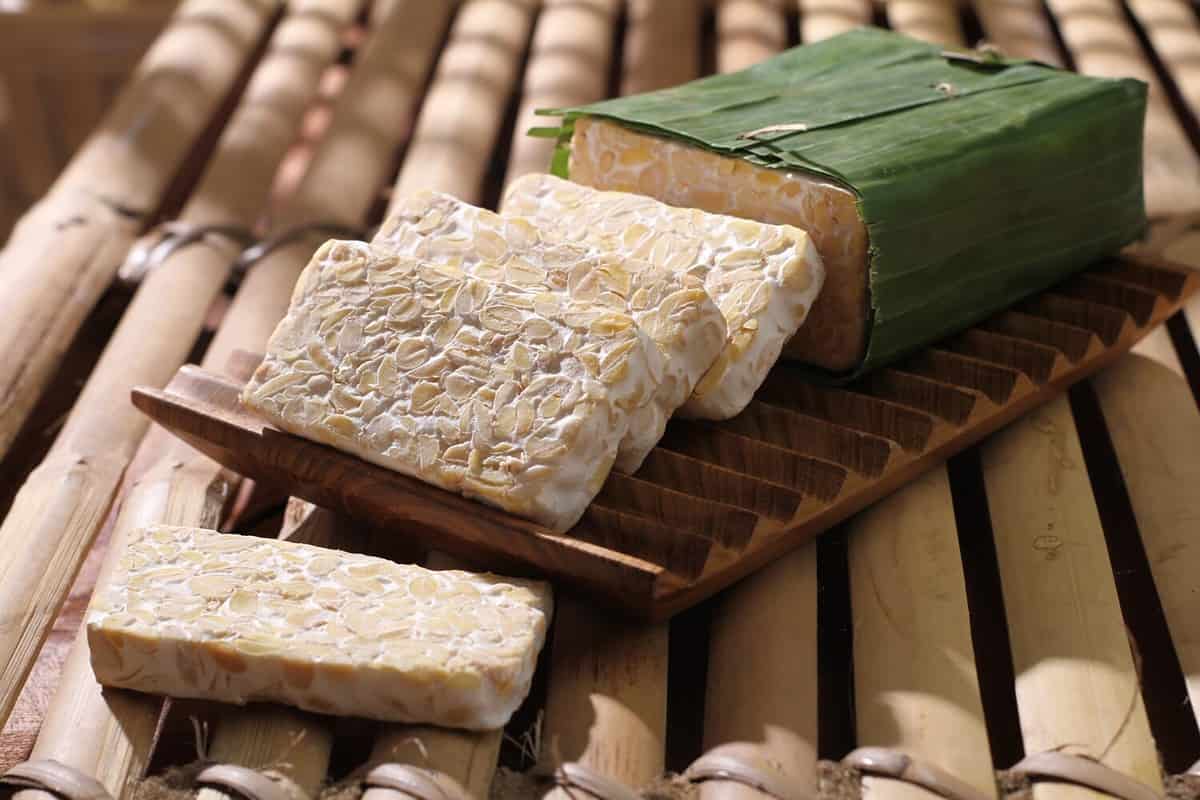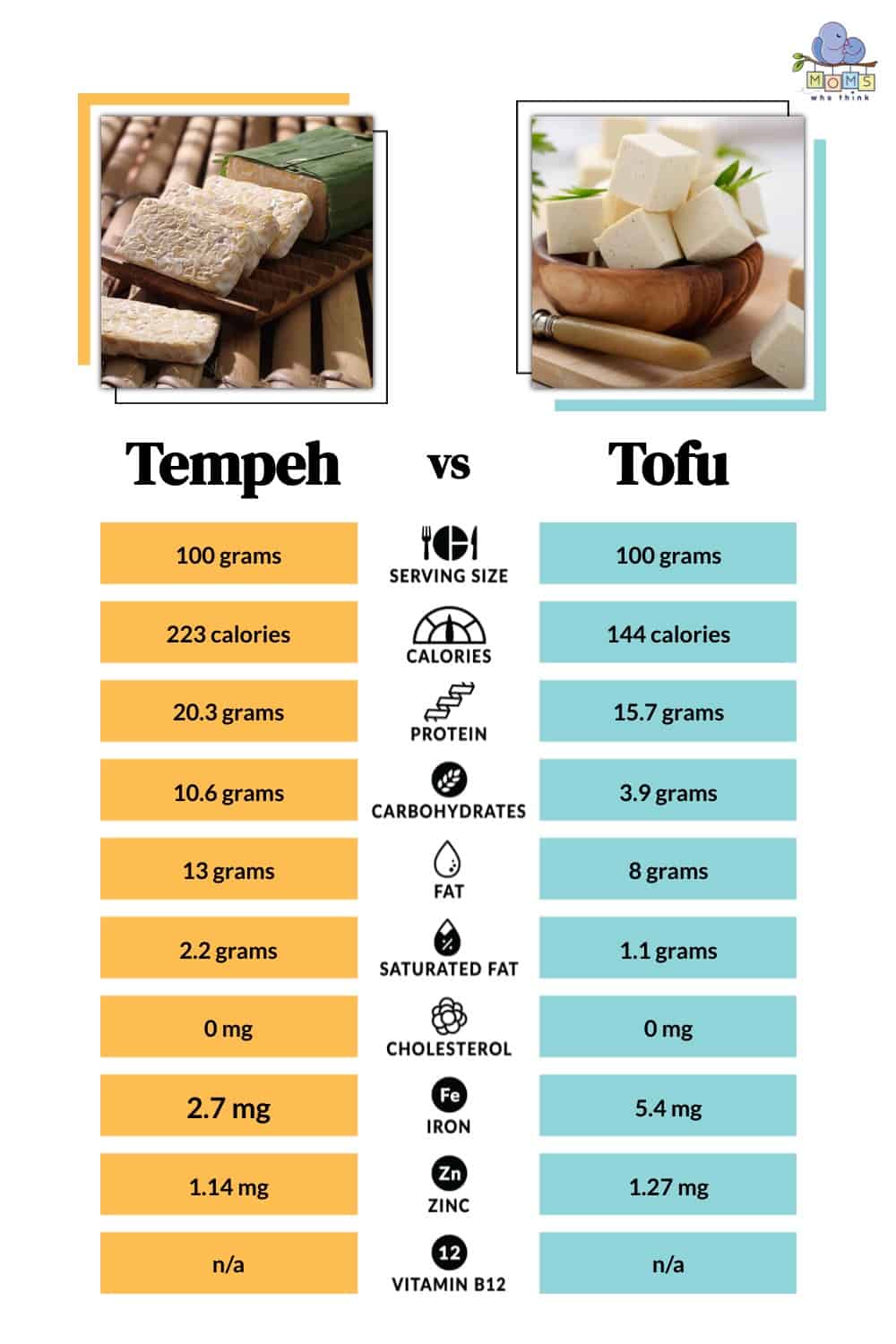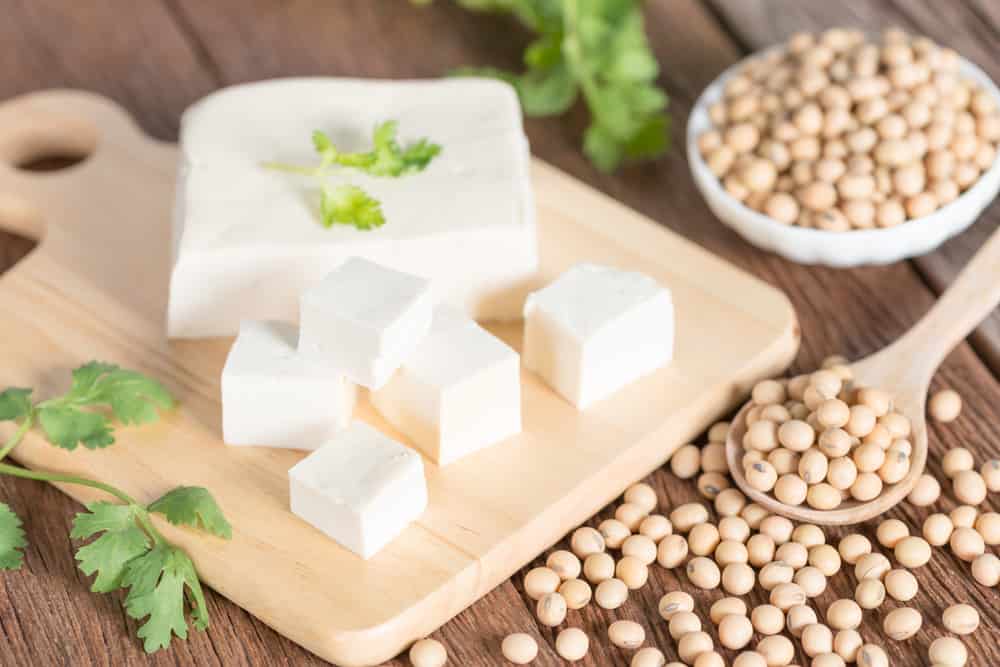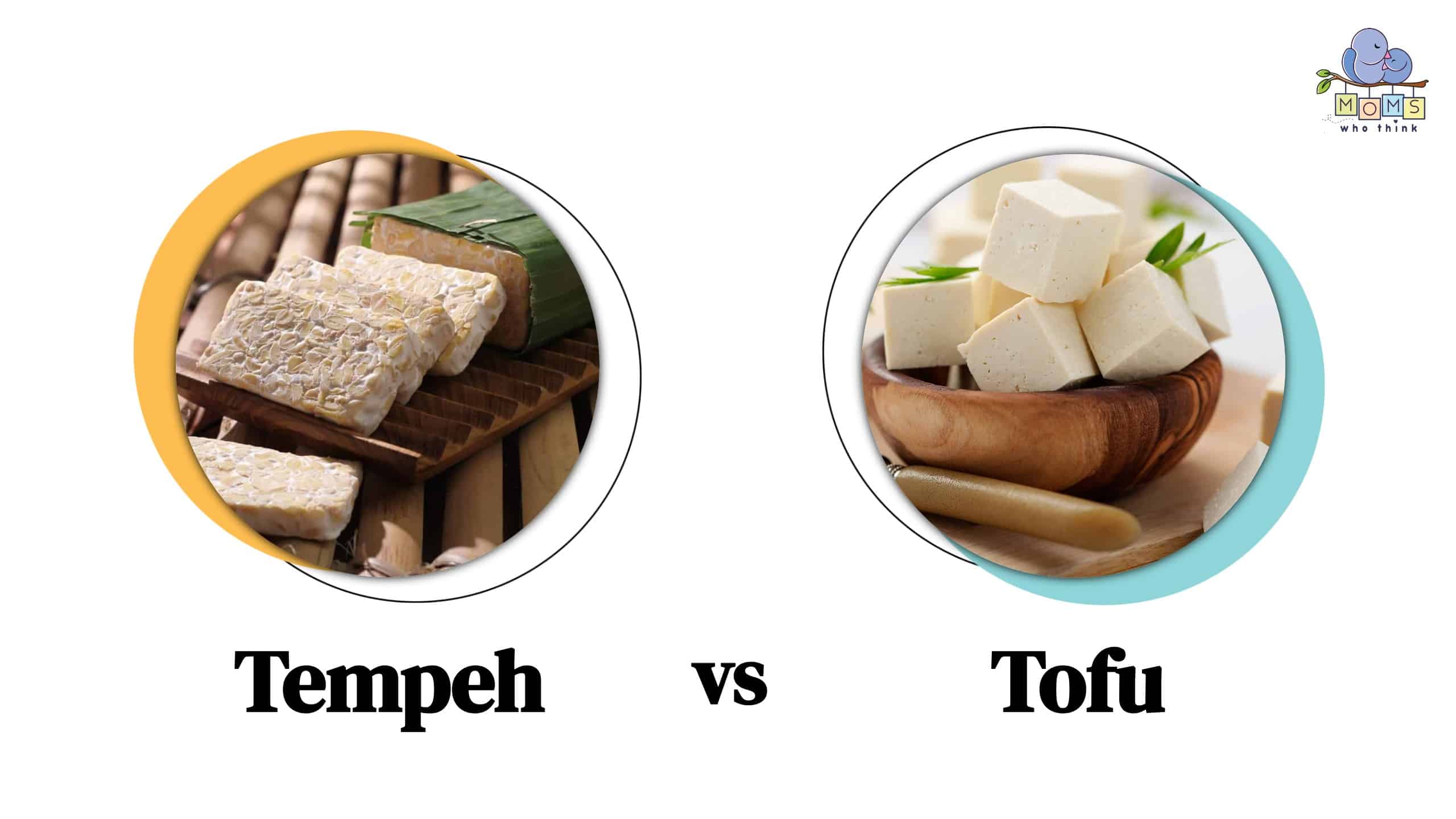Tempeh is a type of food you might not know about unless you’re familiar with Indonesian cuisine. However, if you are familiar with this plant-based food, you’ve likely noticed the similarities between tempeh and tofu. Despite the similarities, you'll notice several key differences when comparing tempeh vs. tofu.
The main difference between tempeh and tofu is that you make tempeh with fermented soy beans while you make tofu with soy milk. Tempeh can also be made from other types of beans or grains. Additionally, tofu is typically flavorless while tempeh has a nutty flavor.
If you’re wondering about what tempeh is and how it compares to tofu, keep reading to find out about the differences between them.

©Ricky_herawan/Shutterstock.com
Tempeh vs. Tofu: What Is the Difference?
If you’re on a plant-based diet, you might wonder about the difference between tofu and tempeh since they sound like they have a lot in common. Both tofu and tempeh can be great substitutes for meat in many recipes, but there are many differences between them as well.
The first difference between them is their ingredients. While tempeh is made from fermented soy beans, tofu is made from soy milk. To make tempeh, whole soybeans are combined with a fungus so they can ferment. After fermenting for one to two days, the soybeans come together to form the tempeh.
On the other hand, the process of making tofu involves soaking soybeans to create soy milk. Then, a coagulant is added to make the tofu. Since tempeh is made of whole soybeans, it has a much firmer and solid texture than tofu.
When it comes to their nutritional values and benefits, both can be a healthy part of a balanced diet. Tempeh and tofu are both nutrient dense but tofu is lower in calories than tempeh while tempeh is higher in protein.
Main Differences Between Tempeh vs. Tofu
Even though tempeh and tofu are both soy-based foods, they have many differences as well. Here are main differences between tempeh and tofu:
- Tempeh is made from whole soybeans
The main difference between tempeh and tofu is that tempeh is made from whole soybeans while tofu is made from soy milk. - Tofu is less firm than tempeh
Since tempeh is made from whole beans, it has a much firmer texture than tofu. Tofu is more mushy and flexible while tempeh is firmly packed together. - Tofu is mostly flavorless
For tofu to taste good, it has to absorb the flavors and spices from your recipe. Tofu on its own is mostly flavorless, but tempeh has a nutty flavor.
Nutritional Value of Tempeh vs. Tofu

What Is Tempeh?
If you’ve never heard of tempeh, it’s likely because it’s a traditional dish in Indonesian cuisine. Many people compare tempeh to tofu since both are plant-based foods that are high in protein. However, unlike tofu, tempeh is made from fermented soybeans although it can be made from other types of beans or grains as well.
To make tempeh, the soybeans or other beans are fermented for one to two days, leading to a high-protein, plant-based food. Tempeh is a great choice for those who are either looking for a healthy way to eat more protein or are on a plant-based diet looking for meat substitutes. This food is nutrient dense and has numerous health benefits.
While the history of tempeh isn’t completely clear, it’s believed that tempeh has been a part of Indonesian cuisine for thousands of years. However, it has become increasingly popular since the mid to late 1900s and it’s often used as a replacement for meat for those on a vegetarian or vegan diet.
What Is Tofu?
Like tempeh, tofu is a plant-based food made from soybeans. However, instead of whole soybeans, tofu is made from soymilk. The process of making tofu involves soaking dried soybeans and then cooking them to extract the milk. After adding a coagulant, the tofu is drained.
Even though tofu originated in China, it has been popular in the United States since the 1960s. Tofu has existed in the United States since at least the 1800s, but the rise in vegetarian and vegan diets has made tofu a more common food in America.
Tofu is a flavorless food that easily soaks up the spices, seasonings, and other flavors of the ingredients you cook it with. It does have a much softer texture than tempeh but you can purchase in several varieties including silken, regular, firm, extra-firm, or super-firm.
What’s the Flavor of Tempeh?
When it comes to plant-based food, it’s not always easy to find food that’s nutritious and tasty. There are numerous ways to cook tempeh that make it a delicious part of a healthy, plant-based meal.
Since tempeh is made from soy-beans or other types of beans, it has a slightly earthy flavor and a flavor that’s often described as nutty as well. Like tofu, it will take on the flavors of most seasonings you include in your dish, so it’s neutral enough to include it with a variety of spices, seasonings, and flavors.
Aside from the nutty flavor, it’s flavor is also compared to mushrooms. These flavors combined with its firm texture make it a great meat substitute.

©inewsfoto/Shutterstock.com
Are Tempeh and Tofu Healthy?
The one thing tofu and tempeh have in common is they’re both healthy foods. Tempeh especially can be a healthy and protein-packed substitute for meat in a variety of recipes. Not only is it high in protein, it’s also high in fiber while still being relatively low in carbs.
Not only are tempeh and tofu great for those on a plant-based diet, but they’re also good for those who have celiac disease or gluten-sensitivity. Tempeh and tofu are naturally gluten-free. However, check the label before buying either since some versions may contain other ingredients.
Soy-based foods like tempeh and tofu are healthy, especially when it comes to your bone health and brain health. These types of foods can also assist in lowering your blood pressure and preventing cardiovascular issues.
Where Can You Buy Tempeh?
If you’re convinced tempeh is worth trying and want to add it to a healthy lunch or dinner recipe, where can you find tempeh? Since it’s a traditional Indonesian dish, it’s not as easy to find as tofu. While you won’t find tempeh in all grocery stores, those that have a wider variety of ethnic foods may carry it.
If you can’t find it in your standard grocery store, you’re likely to find it in a local health food store. Since it’s common to use tempeh as a meat substitute like tofu, you’ll find it in stores that offer many plant-based options.
How to Use Tempeh and Tofu
Even though tempeh is a plant-based food doesn’t mean you have to use it only as a substitute for meat. Both tofu and tempeh can be a delicious part of a variety of recipes, including:
- Soups
- Stews
- Stir-fries
- Sandwiches
You can choose to roast tempeh or tofu in the oven, sear them in a pan, or even grill them. Whether you serve these soy-based foods as part of a salad or you add them to your favorite vegetable soup or stew, they provide you with many health benefits.
Tips for Cooking Tempeh
If you’re not used to cooking with tempeh, you might wonder about the best way to cook it. Like tofu, it has a much different texture from meat. It will typically absorb the flavors and spices of whatever you’re eating.
To get the best flavors and texture out of tempeh, here are some tips for cooking it:
- Use a marinade
One of the ways to bring out the best flavor in tempeh is to marinate it before cooking. You can use a variety of marinades, especially if you want to keep it simple with olive oil, lemon juice, and seasonings. - Season it well
The key to making tasty tempeh is to season it incredibly well like you would when cooking meat. You can choose different seasonings that you want to go with your meal. Keep in mind the tempeh will take on the flavor of the food you cook it with. - Steam tempeh to reduce bitterness
If you’re not a fan of the bitterness of the tempeh, you can reduce some of the bitterness and create a more mild flavor by steaming it beforehand. You can either do this in the microwave or by placing it in a steamer basket on the stove.
Adding Tempeh or Tofu to Your Meals
If you’re interested in finding a substitute for meat or adding more plant-based meals to your diet, tempeh and tofu are both a great addition to any dish. While tempeh is a traditional Indonesian dish made out of soybeans, it’s not the exact same thing as tofu.
Tofu and tempeh do have some things in common. However, tofu is essentially made out of soy milk while tempeh is made out of whole soybeans. Both plant-based foods are nutritious and can be protein-packed substitutes for meat.
Recipe Card
Now that you know the difference between tempeh and tofu, why not try making a delicious recipe with either of these ingredients? If you're really not sure where to start with that, we have you covered. Try this spicy tempeh recipe for dinner tonight. Enjoy!
Print
Spicy Sesame Ginger Tempeh Stir-Fry
- Total Time: 30 minutes
Ingredients
- 1 package (8 oz) tempeh, cubed (or substitute with tofu)
- 3 Tablespoons soy sauce
- 2 Tablespoons sesame oil
- 1 Tablespoon rice vinegar
- 1 Tablespoon maple syrup or agave nectar
- 1 Tablespoon cornstarch
- 2 Tablespoons vegetable oil, divided
- 1 bell pepper, thinly sliced
- 1 carrot, julienned
- 1 cup broccoli florets
- 3 green onions, sliced
- 3 cloves garlic, minced
- 1 Tablespoon fresh ginger, grated
- 1 teaspoon red pepper flakes (adjust to taste)
- Sesame seeds for garnish
- Cooked brown rice or quinoa for serving
Instructions
- In a bowl, whisk together soy sauce, sesame oil, rice vinegar, maple syrup (or agave nectar), and cornstarch to create the marinade.
- Toss the tempeh cubes (or tofu cubes) in the marinade, ensuring they are well coated. Let it marinate for at least 15 minutes.
- Heat 1 tablespoon of vegetable oil in a large skillet or wok over medium-high heat.
- Add the marinated tempeh (or tofu) to the skillet and cook until browned on all sides. Remove from the skillet and set aside.
- In the same skillet, add the remaining 1 tablespoon of vegetable oil.
- Add the bell pepper, carrot, broccoli, green onions, garlic, and ginger. Stir-fry for 5-7 minutes or until the vegetables are tender-crisp.
- Return the cooked tempeh (or tofu) to the skillet and add red pepper flakes. Stir to combine and heat through.
- Serve the spicy sesame ginger tempeh stir-fry over cooked brown rice or quinoa.
- Garnish with sesame seeds.
Nutrition
- Calories: 300
- Sugar: 6 g
- Sodium: 600 mg
- Fat: 18 g
- Carbohydrates: 20 g
- Fiber: 5 g
- Protein: 15 g
- Cholesterol: 0 mg

